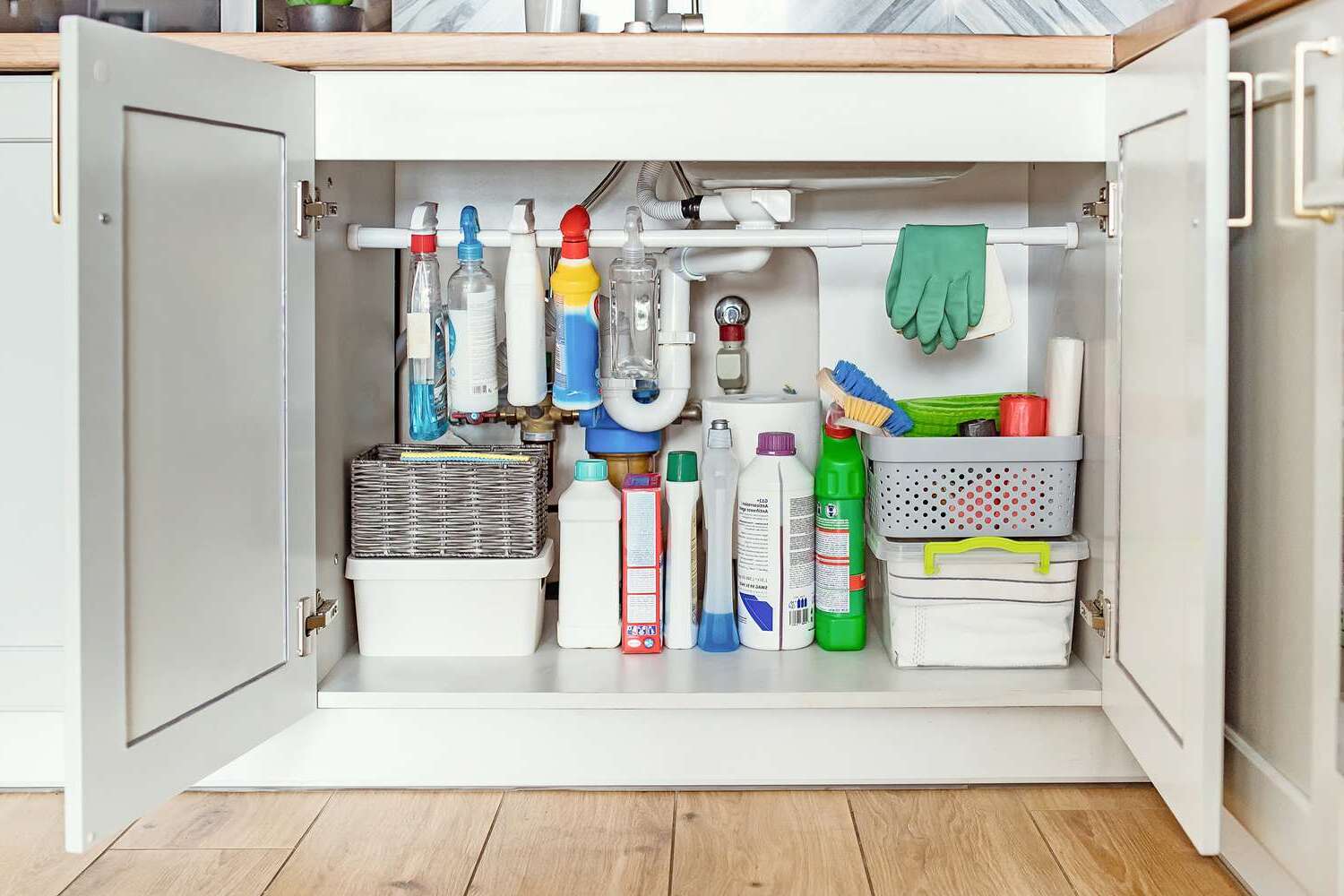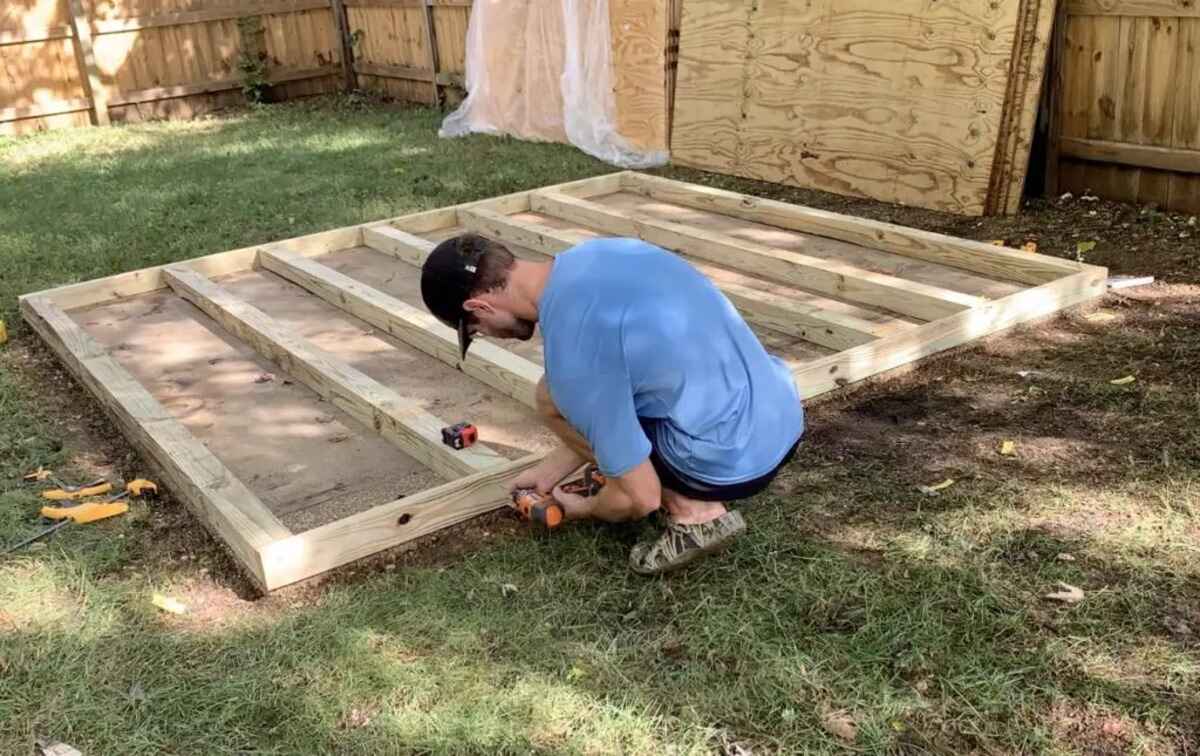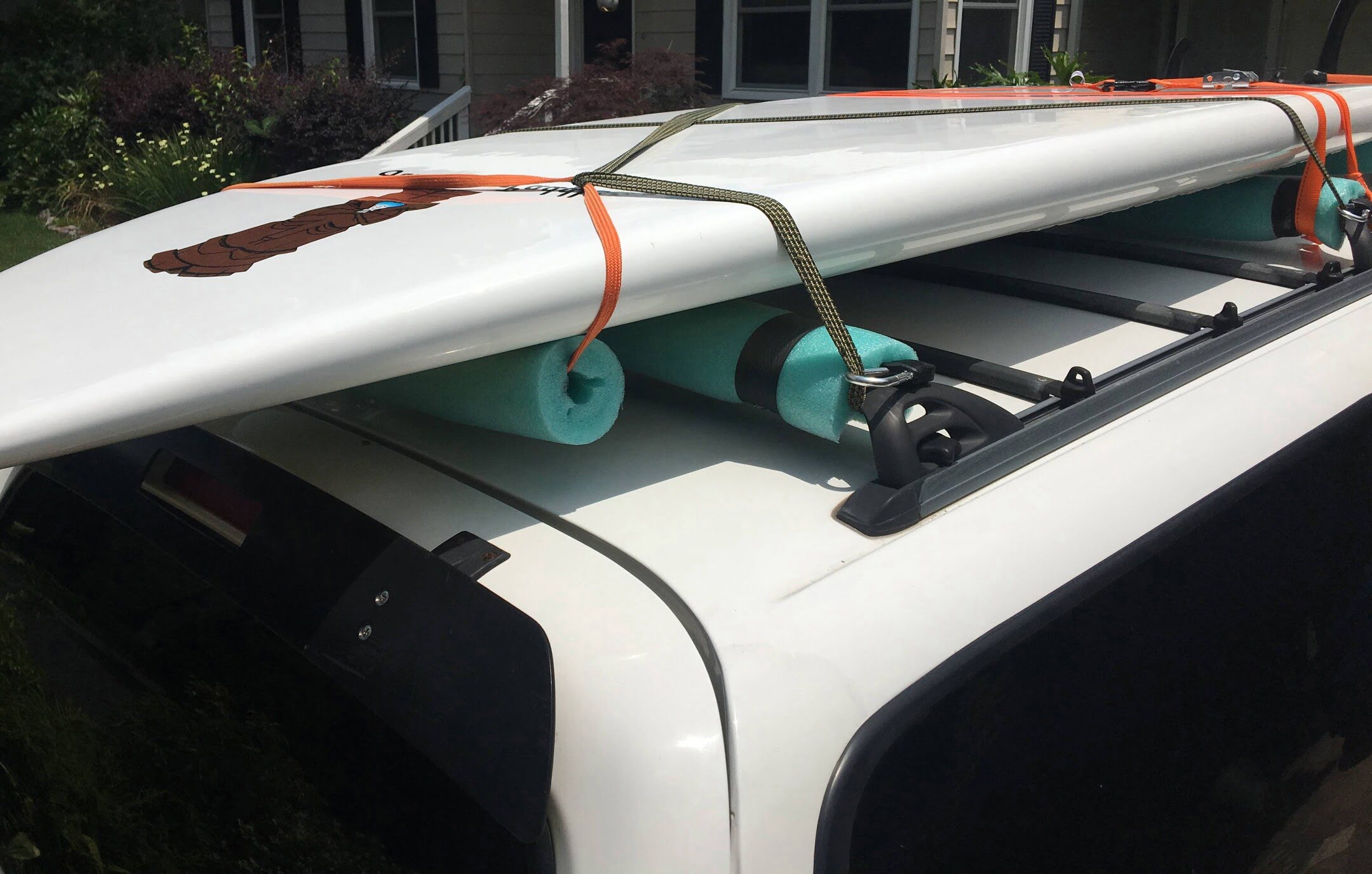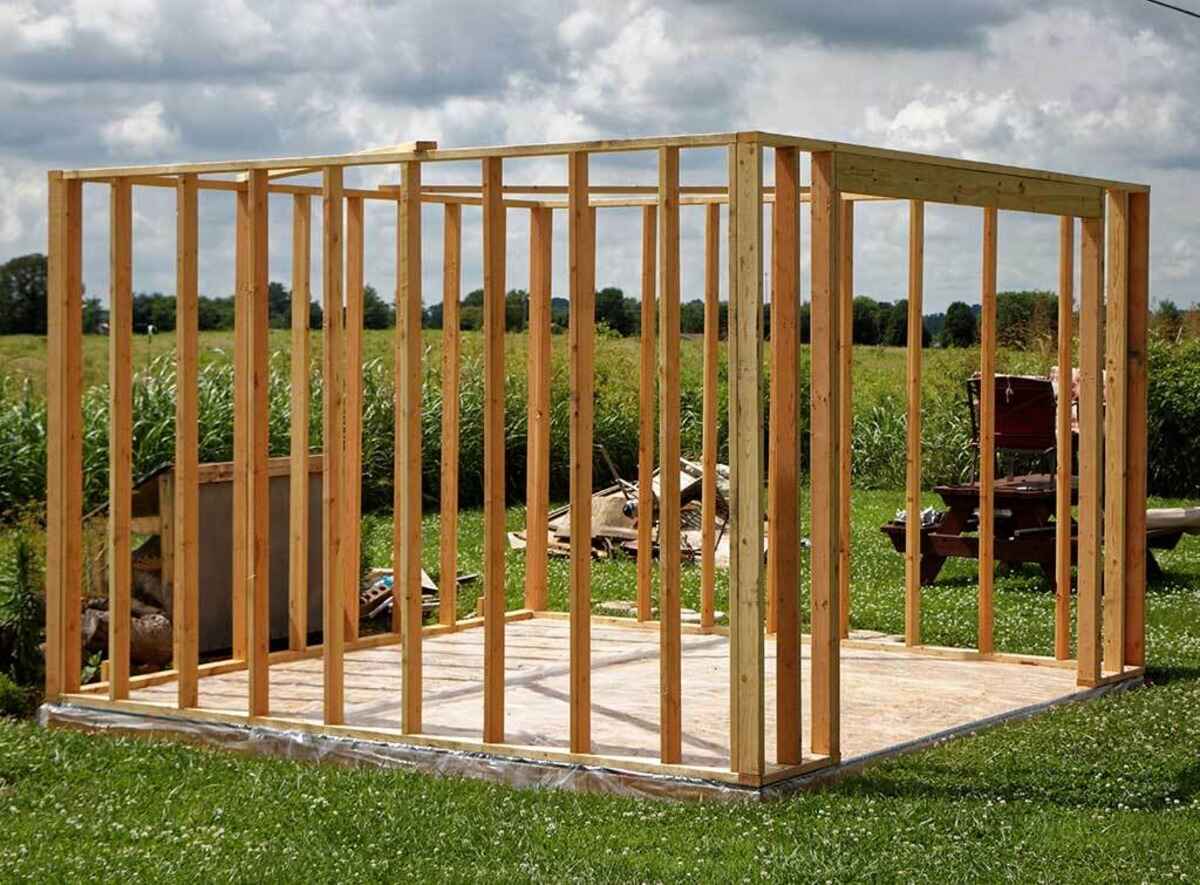Home>Create & Decorate>DIY & Crafts>DIY Pier And Beam Foundation Design: Step-by-Step Guide
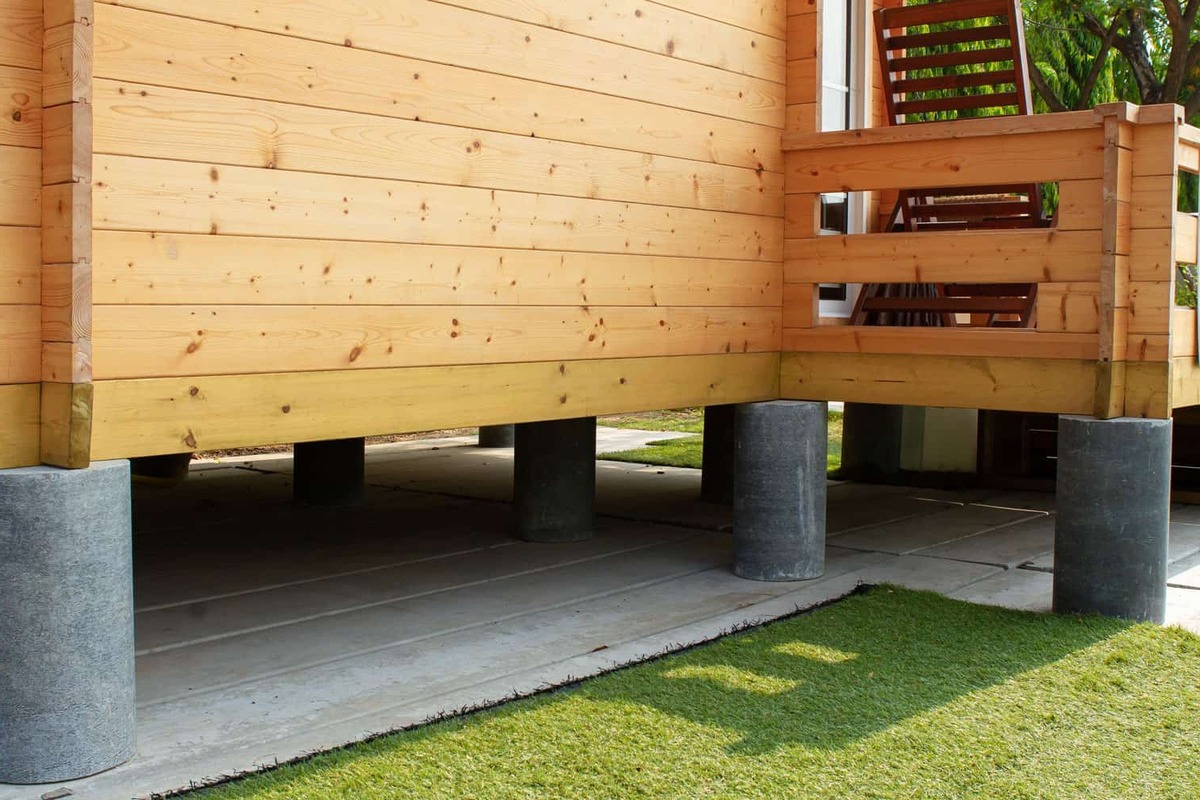

DIY & Crafts
DIY Pier And Beam Foundation Design: Step-by-Step Guide
Published: May 1, 2024

Content Creator specializing in woodworking and interior transformations. Caegan's guides motivate readers to undertake their own projects, while his custom furniture adds a personal touch.
Learn how to design a pier and beam foundation with our step-by-step guide. Perfect for DIY enthusiasts and crafters. Start your project today!
(Many of the links in this article redirect to a specific reviewed product. Your purchase of these products through affiliate links helps to generate commission for Twigandthistle.com, at no extra cost. Learn more)
Introduction
Are you considering building a new structure or renovating an existing one? If so, understanding the basics of DIY pier and beam foundation design is crucial. This step-by-step guide will walk you through the process of creating a sturdy and reliable foundation for your project. Whether you're a seasoned DIY enthusiast or a novice looking to expand your skills, this guide will provide you with the knowledge and confidence to tackle this essential aspect of construction. Let's dive in and explore the world of pier and beam foundations!
Read more: How to Build a DIY Garage Foundation
Understanding Pier and Beam Foundations
Pier and beam foundations, also known as post and beam foundations, are a type of foundation commonly used in residential construction. Unlike slab foundations that sit directly on the ground, pier and beam foundations elevate the structure above the ground, creating a crawl space underneath. This design offers several advantages, including easier access to plumbing and electrical systems, better ventilation, and the ability to accommodate uneven terrain.
Advantages of Pier and Beam Foundations
- Moisture Control: Elevating the structure minimizes the risk of moisture seeping into the living space, reducing the likelihood of mold and mildew.
- Accessibility: The crawl space provides convenient access for maintenance and repairs to plumbing, electrical, and HVAC systems.
- Flexibility: Pier and beam foundations can accommodate uneven terrain, making them suitable for areas with varying soil conditions.
- Insulation: The raised structure allows for insulation installation, improving energy efficiency and comfort within the home.
Components of Pier and Beam Foundations
- Piers: These vertical support structures are typically made of concrete or treated wood and are strategically placed to bear the weight of the building.
- Beams: Horizontal beams, often made of wood or steel, rest on top of the piers and provide support for the floor joists.
- Joists: These parallel horizontal timbers support the subfloor and distribute the weight of the structure to the beams.
- Subflooring: The solid layer of flooring material that sits atop the joists and forms the base for the finished floor.
Understanding the key components and benefits of pier and beam foundations is essential before embarking on a DIY project. With this knowledge in hand, you'll be better equipped to plan and execute the construction of a durable and resilient foundation for your home or building.
Planning and Site Preparation
Before diving into the physical work of building a pier and beam foundation, thorough planning and site preparation are essential for a successful project. Here's what you need to consider before breaking ground:
Read more: How to Build a DIY Garage Gantry Crane
1. Obtain Necessary Permits and Clearances
Before starting any construction, it's crucial to check with local authorities to obtain the required permits and clearances. Building codes and regulations vary by location, so ensure that you comply with all legal requirements before proceeding.
2. Survey the Site
Hire a professional surveyor to assess the site and determine the precise location and dimensions for the foundation. This step is crucial for ensuring that the foundation is positioned correctly and complies with property boundaries and zoning regulations.
3. Clear the Area
Clear the construction site of any debris, vegetation, or obstacles that may hinder the foundation work. This includes removing rocks, tree roots, and other obstructions to create a clean and level surface for construction.
4. Evaluate Soil Conditions
Understanding the soil composition and bearing capacity is vital for designing a stable foundation. Conduct soil tests to assess factors such as moisture content, compaction, and load-bearing capacity. This information will guide the selection of appropriate foundation materials and designs.
Read more: How To Build Shed Foundation
5. Establish Proper Drainage
Ensure that the site has adequate drainage to prevent water accumulation around the foundation. Proper grading and the installation of drainage systems, such as French drains, can help mitigate water-related issues and protect the foundation from moisture damage.
6. Plan for Utility Installations
Consider the placement of utility lines, such as water, sewer, and electrical connections, when designing the foundation layout. Coordinate with utility providers to ensure that these services are properly integrated into the construction plans.
7. Secure Necessary Equipment and Resources
Gather the required equipment and materials for the foundation construction, including excavation tools, concrete mixers, formwork, and safety gear. Having everything on hand before starting the project will streamline the construction process and minimize delays.
By meticulously planning and preparing the construction site, you can lay a solid groundwork for the successful implementation of your pier and beam foundation. Taking the time to address these crucial pre-construction considerations will contribute to the overall stability and longevity of the completed structure.
Materials and Tools Needed
Before embarking on the construction of a pier and beam foundation, it's essential to gather the necessary materials and tools to ensure a smooth and efficient building process. Here's a comprehensive list of the items you'll need to have on hand:
Materials
-
Concrete: High-quality concrete mix for creating footings and piers. Ensure that the mix meets the strength and durability requirements specified for the project.
-
Rebar: Reinforcing steel bars to enhance the strength and stability of the concrete footings and piers. The diameter and spacing of the rebar should comply with structural engineering specifications.
-
Pressure-Treated Lumber: Treated wood for constructing piers, beams, and joists. The treatment protects the wood from decay, insects, and moisture, making it suitable for ground contact and crawl space use.
-
Anchor Bolts: Galvanized anchor bolts for securing the wooden sill plate to the concrete footings. The bolts should be of sufficient length and diameter to provide a secure connection.
-
Subflooring Material: Plywood or oriented strand board (OSB) for creating the subfloor. Choose a material with the appropriate thickness and structural rating for the intended use.
-
Insulation: Insulation material to install between the floor joists to improve energy efficiency and thermal comfort within the building.
-
Ventilation Components: Vents, access doors, and moisture barriers for ensuring proper ventilation and moisture control in the crawl space.
-
Fasteners and Hardware: Nails, screws, joist hangers, and other hardware for assembling the structural components of the foundation.
-
Gravel or Crushed Stone: Aggregate material for backfilling around the footings and providing drainage within the crawl space.
Tools
-
Excavation Equipment: Shovels, spades, and a digging bar for excavating the holes for the piers and footings. Consider using a power auger for larger projects to expedite the digging process.
-
Concrete Mixing Tools: Wheelbarrow, concrete mixer, and mixing tools for preparing and pouring the concrete footings and piers.
-
Leveling and Measuring Tools: Builder's level, tape measure, and string lines for ensuring accurate layout and leveling of the foundation components.
-
Cutting and Framing Tools: Circular saw, framing square, and a nail gun for cutting and assembling the wooden components of the foundation.
-
Safety Gear: Hard hat, work gloves, safety glasses, and hearing protection to ensure a safe working environment during construction.
-
Crawl Space Ventilation Tools: Vent installation tools, such as a reciprocating saw and drill, for creating openings and installing ventilation components in the crawl space.
By procuring the appropriate materials and tools, you'll be well-equipped to tackle the construction of a pier and beam foundation with confidence and precision. Having everything you need at your disposal will streamline the building process and contribute to the structural integrity of the completed foundation.
Step 1: Excavating the Holes for Piers
Excavating the holes for piers is the foundational step in the construction of a pier and beam foundation. This process involves carefully digging and preparing the ground to accommodate the vertical support structures that will bear the weight of the building. Here's a detailed breakdown of the essential tasks involved in this critical phase of the construction:
-
Marking the Pier Locations: Begin by marking the precise locations for the piers according to the foundation layout and design plans. Use string lines, stakes, or spray paint to outline the positions where the piers will be installed. Accurate marking is crucial for ensuring that the piers are aligned correctly and evenly distributed to support the entire structure.
-
Excavation Tools and Equipment: Gather the necessary excavation tools and equipment, including shovels, spades, digging bars, and, if applicable, a power auger for larger projects. Ensure that the tools are in good condition and suitable for the soil type and depth of the excavation.
-
Digging the Holes: Using the marked locations as a guide, begin digging the holes for the piers. The depth and diameter of the holes should align with the structural engineering specifications and local building codes. Excavate the soil carefully, removing rocks, roots, and other debris that may interfere with the placement of the piers.
-
Maintaining Uniform Depth: As you dig the holes, pay close attention to maintaining a uniform depth for each pier. Consistency in the depth of the holes is essential for ensuring that the piers provide even support for the structure. Use a tape measure or a marked digging tool to verify the depth as you progress.
-
Checking Hole Alignment and Level: Periodically check the alignment and levelness of the excavated holes to ensure that they correspond to the intended positions and specifications. Use a builder's level and a measuring tape to verify that the holes are accurately positioned and have the required depth.
-
Removing Excess Soil: Once the holes are excavated to the appropriate depth, remove any excess soil and debris from the bottom of the holes. Clearing the holes of loose soil will create a clean and stable foundation for pouring the concrete footings that will support the piers.
-
Inspecting the Holes: Before proceeding to the next phase of the construction, thoroughly inspect the excavated holes to ensure that they meet the specified dimensions, depth, and alignment requirements. Address any discrepancies or irregularities before proceeding with the subsequent steps.
By meticulously executing the process of excavating the holes for piers, you'll establish a solid foundation for the subsequent stages of constructing a pier and beam foundation. Attention to detail and precision during this phase will contribute to the overall stability and reliability of the completed foundation.
Step 2: Pouring Concrete Footings
Pouring concrete footings is a critical phase in the construction of a pier and beam foundation, as it provides a stable base for the piers that will support the structure. This step involves carefully preparing the formwork and pouring high-quality concrete to create durable footings. Here's a detailed breakdown of the essential tasks involved in this pivotal stage of the construction:
-
Preparing the Formwork: Begin by constructing the formwork for the concrete footings. The formwork, typically made of wood or metal, serves as a mold to contain the concrete during pouring. Ensure that the formwork is securely positioned and aligned according to the layout and dimensions specified in the construction plans.
-
Installing Reinforcement: If required by the structural design, place reinforcing steel bars (rebar) within the formwork to enhance the strength and load-bearing capacity of the footings. The rebar should be positioned at the specified depth and spacing to provide optimal reinforcement.
-
Mixing and Pouring Concrete: Prepare the concrete mix according to the recommended proportions and specifications. Use a concrete mixer or a wheelbarrow to mix the concrete thoroughly. Once the concrete is properly mixed, carefully pour it into the formwork, ensuring that it fills the entire space and achieves the desired level.
-
Leveling and Smoothing: After pouring the concrete, use a screed board or a straight edge to level the surface of the footings. Smooth out any irregularities and ensure that the concrete is uniformly distributed within the formwork. Pay close attention to achieving a consistent and level finish across the entire footing area.
-
Curing and Protection: Once the concrete footings are poured and leveled, it's essential to protect them during the curing process. Cover the footings with plastic sheeting or damp burlap to retain moisture and promote proper curing. Protect the footings from extreme temperatures and excessive moisture to prevent cracking and ensure optimal strength development.
-
Removing Formwork: Allow the concrete to cure for the recommended period, typically several days, before removing the formwork. Carefully dismantle the formwork, taking care not to disturb the newly poured footings. Inspect the footings for any signs of damage or imperfections and address any issues as needed.
By meticulously executing the process of pouring concrete footings, you'll establish a solid and reliable foundation for the subsequent stages of constructing a pier and beam foundation. Attention to detail and adherence to best practices during this phase will contribute to the overall stability and durability of the completed foundation.
Read more: DIY Basement Wall Bracing Guide
Step 3: Installing the Piers
Installing the piers is a crucial step in the construction of a pier and beam foundation, as these vertical support structures bear the weight of the building and transfer it to the underlying soil. Here's a detailed breakdown of the essential tasks involved in this pivotal stage of the construction:
-
Positioning the Piers: Carefully place the precast concrete or treated wood piers into the excavated holes, ensuring that they are aligned with the layout and spacing specified in the construction plans. Use a builder's level and a measuring tape to verify that the piers are positioned at the correct height and are plumb and level.
-
Securing the Piers: Once the piers are in position, secure them by backfilling the excavated holes with compacted soil or concrete. Ensure that the piers are firmly anchored and supported to prevent shifting or settling over time. Verify that the piers are uniformly spaced and adequately distributed to provide consistent support for the structure.
-
Attaching the Sill Plate: After the piers are securely in place, attach the wooden sill plate to the top of the piers using galvanized anchor bolts. The sill plate serves as the connection point between the piers and the wooden framework of the structure. Ensure that the sill plate is level and properly aligned to facilitate the subsequent installation of beams and joists.
-
Checking Alignment and Stability: Periodically check the alignment and stability of the installed piers to ensure that they conform to the specified dimensions and structural requirements. Use a level and a framing square to verify that the piers are plumb, level, and square, providing a solid foundation for the subsequent construction phases.
-
Inspecting Load-Bearing Capacity: Once the piers are installed, conduct a thorough inspection to assess their load-bearing capacity and structural integrity. Verify that the piers can support the anticipated weight of the structure and make any necessary adjustments or reinforcements to ensure their stability and reliability.
By meticulously executing the process of installing the piers, you'll establish a solid and reliable foundation for the subsequent stages of constructing a pier and beam foundation. Attention to detail and adherence to best practices during this phase will contribute to the overall stability and durability of the completed foundation.
Step 4: Adding Beams and Joists
After the installation of the piers, the next crucial step in constructing a pier and beam foundation involves adding beams and joists to provide structural support for the subfloor and the entire building. Here's a detailed breakdown of the essential tasks involved in this pivotal stage of the construction:
-
Selecting and Positioning Beams: Choose high-quality, pressure-treated wooden beams that are suitable for supporting the intended load of the structure. Position the beams on top of the installed piers, ensuring that they are aligned according to the layout and spacing specified in the construction plans. Use a builder's level and measuring tape to verify that the beams are level and evenly positioned.
-
Attaching Beams to Piers: Secure the beams to the piers using appropriate fasteners, such as anchor brackets or post caps. Ensure that the connection between the beams and the piers is strong and stable, providing a solid foundation for the subsequent installation of joists and subflooring.
-
Installing Joists: Once the beams are in place, install the wooden joists perpendicular to the beams, creating a framework that supports the subfloor. Space the joists according to the structural engineering specifications and local building codes, ensuring that they are adequately sized to bear the anticipated loads.
-
Securing Joists to Beams: Attach the joists to the beams using joist hangers or appropriate fasteners, ensuring a secure and reliable connection. Verify that the joists are level and uniformly positioned to provide consistent support for the subfloor and the finished floor.
-
Verifying Structural Integrity: Periodically inspect the installed beams and joists to ensure their structural integrity and load-bearing capacity. Use a level and measuring tools to verify that the components are properly aligned and positioned, providing a stable and reliable framework for the subsequent construction phases.
By meticulously executing the process of adding beams and joists, you'll establish a solid and reliable foundation for the subsequent stages of constructing a pier and beam foundation. Attention to detail and adherence to best practices during this phase will contribute to the overall stability and durability of the completed foundation.
Step 5: Installing Subflooring
Installing the subflooring is a pivotal step in the construction of a pier and beam foundation, as it provides a solid base for the finished flooring and contributes to the overall structural integrity of the building. Here's a detailed breakdown of the essential tasks involved in this critical stage of the construction:
-
Selecting Subflooring Material: Choose high-quality plywood or oriented strand board (OSB) for the subflooring, ensuring that the material meets the specified thickness and structural rating for the intended use. Select subflooring panels that are free from defects and damage, as they will serve as the foundation for the finished floor.
-
Measuring and Cutting: Measure the dimensions of the floor area and cut the subflooring panels to fit the space accurately. Use a circular saw or a suitable cutting tool to achieve clean and precise cuts, ensuring that the panels align with the layout and design plans.
-
Laying the Subfloor: Begin laying the subflooring panels, starting from one corner of the floor area and working towards the opposite end. Stagger the panel joints to enhance structural stability and minimize the risk of floor squeaks. Secure the panels to the joists using appropriate fasteners, such as nails or screws, ensuring a tight and secure fit.
-
Ensuring Panel Alignment: Verify that the subflooring panels are aligned and flush with the edges of the floor area, creating a smooth and even surface for the finished flooring. Use a straight edge or a level to check for any irregularities or unevenness, making adjustments as needed to achieve a uniform subfloor.
-
Securing the Subfloor: Secure the subflooring panels to the joists at the recommended spacing, ensuring that the fasteners penetrate the panels and firmly anchor them to the underlying framework. Pay attention to the perimeter of the floor area, ensuring that the subflooring is adequately supported and secured along the edges.
-
Inspecting Subfloor Integrity: Periodically inspect the installed subflooring to ensure its structural integrity and stability. Walk across the subfloor to identify any areas of flex or movement, addressing any issues that may compromise the stability and reliability of the subfloor.
By meticulously executing the process of installing subflooring, you'll establish a solid and reliable foundation for the finished flooring and the overall structure. Attention to detail and adherence to best practices during this phase will contribute to the overall stability and durability of the completed pier and beam foundation.
Step 6: Insulating and Ventilating the Crawlspace
Insulating and ventilating the crawlspace is a crucial step in the construction of a pier and beam foundation, as it contributes to energy efficiency, moisture control, and the overall health of the building. Here's a detailed breakdown of the essential tasks involved in this critical stage of the construction:
-
Assessing Insulation Needs: Begin by assessing the insulation requirements for the crawlspace based on local climate conditions and energy efficiency goals. Determine the appropriate R-value for the insulation material to effectively control heat transfer and minimize energy loss.
-
Selecting Insulation Material: Choose insulation material suitable for the crawlspace environment, such as fiberglass batts, rigid foam boards, or spray foam insulation. Ensure that the selected material is resistant to moisture and pests, providing long-term performance in the crawlspace.
-
Installing Insulation: Install the insulation material between the floor joists, ensuring a snug fit and complete coverage. Seal any gaps or voids to prevent air leakage and maintain the integrity of the insulation barrier. Pay particular attention to areas prone to thermal bridging, such as around plumbing and electrical penetrations.
-
Creating Vapor Barrier: Install a vapor barrier over the insulation to control moisture and prevent the accumulation of condensation within the crawlspace. The vapor barrier should be properly sealed at seams and edges to create an effective moisture barrier.
-
Ventilation Considerations: Evaluate the ventilation needs of the crawlspace to ensure adequate air circulation and moisture control. Install vents or access doors to facilitate airflow and prevent stagnant, humid conditions that can lead to mold and mildew growth.
-
Moisture Control Measures: Implement moisture control measures, such as installing a dehumidifier or a sump pump if the crawlspace is prone to excess moisture. Address any water intrusion issues and ensure proper drainage to prevent moisture-related problems.
-
Inspecting and Maintaining: Periodically inspect the insulation and ventilation systems in the crawlspace to ensure their effectiveness and address any issues promptly. Monitor moisture levels and air quality to maintain a healthy and well-ventilated environment.
By meticulously executing the process of insulating and ventilating the crawlspace, you'll contribute to the overall energy efficiency, comfort, and structural integrity of the pier and beam foundation. Attention to detail and adherence to best practices during this phase will enhance the long-term performance and livability of the completed building.
Read more: Sloped Shed Foundation: A DIY Guide
Step 7: Finishing Touches and Considerations
As the construction of the pier and beam foundation nears completion, attention to finishing touches and essential considerations is crucial to ensure the overall integrity and functionality of the structure. This phase encompasses a range of tasks and considerations that contribute to the finalization of the foundation and set the stage for the subsequent stages of construction and building occupancy.
Sealing and Waterproofing
Inspect the foundation for any gaps, cracks, or openings that may allow water intrusion into the crawlspace. Seal these areas using appropriate sealants or waterproofing materials to prevent moisture-related issues and protect the foundation from water damage.
Termite Protection
Implement termite protection measures to safeguard the wooden components of the foundation from termite infestation. Consider applying termite-resistant treatments or installing physical barriers to deter termite activity and preserve the structural integrity of the foundation.
Access and Maintenance
Ensure that the crawlspace has adequate access points for maintenance and inspections. Install access doors or hatches that allow convenient entry into the crawlspace for routine upkeep and repairs to plumbing, electrical, and HVAC systems.
Consideration for Utilities
Coordinate with utility providers to ensure that water, sewer, and electrical connections are properly integrated into the foundation design. Plan for the location of utility access points and service lines to facilitate future maintenance and upgrades.
Structural Integrity Inspection
Conduct a comprehensive inspection of the completed foundation to verify its structural integrity and compliance with building codes and regulations. Address any deficiencies or deviations from the construction plans to ensure that the foundation meets the required standards.
Future Expansion and Modifications
Anticipate future expansion or modifications to the building and consider how the foundation design accommodates these possibilities. Plan for additional piers, beams, or structural reinforcements that may be necessary for future renovations or building expansions.
Landscaping and Drainage
Evaluate the landscaping and drainage around the foundation to ensure that water is directed away from the structure. Implement grading and drainage solutions to prevent water accumulation near the foundation and mitigate the risk of moisture-related issues.
Read more: How to Build a Basement French Drain Diagram
Documentation and Record-Keeping
Maintain detailed documentation of the pier and beam foundation construction, including plans, permits, inspection reports, and material specifications. Keep comprehensive records for future reference and to facilitate any necessary maintenance or repairs.
By addressing these finishing touches and considerations, you'll enhance the overall quality and resilience of the pier and beam foundation, setting the stage for the successful continuation of the construction project and the long-term performance of the building.
Conclusion
In conclusion, the construction of a pier and beam foundation is a fundamental aspect of building or renovating a structure. By following the step-by-step guide outlined in this article, DIY enthusiasts and construction professionals alike can create a sturdy and reliable foundation that offers numerous benefits, including moisture control, accessibility for maintenance, flexibility in uneven terrain, and improved energy efficiency. From planning and site preparation to the finishing touches and essential considerations, each phase of the construction process plays a crucial role in ensuring the stability and longevity of the foundation.
The understanding of pier and beam foundations, meticulous planning, the selection of high-quality materials and tools, and the precise execution of each construction phase are essential for achieving a successful outcome. Additionally, attention to insulation, ventilation, and moisture control in the crawlspace contributes to the overall health and energy efficiency of the building.
By adhering to best practices, addressing critical considerations, and maintaining detailed documentation, builders can create a pier and beam foundation that serves as a solid and reliable base for the entire structure. Whether constructing a new home, a detached garage, or a small commercial building, the knowledge and skills gained from this guide empower individuals to undertake the construction of a pier and beam foundation with confidence and precision.


